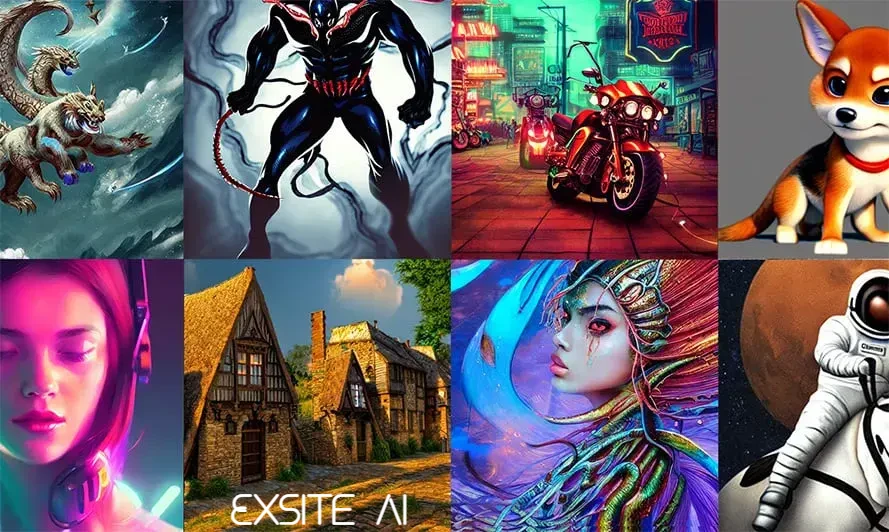
Artificial intelligence (AI) has made generative models powerful instruments that can generate original and creative content. By using cutting-edge algorithms and deep learning techniques, these models enable computers to generate realistic words, images, music, and even films that mimic human creativity.
Within the Eliza chatbot in the 1960s, Joseph Weizenbaum invented the first generative artificial intelligence. In 2014, Ian Goodfellow presented generative adversarial networks as a means of producing realistic-sounding and looking human beings. The recent fervor that gave rise to tools like ChatGPT, Google Gemini Pro, and Dall-E was sparked by Open AI and Google's subsequent research into LLMs.
Generative AI vs. AI
Generative AI produces designs, new content, chat responses, synthetic data, and deepfakes. Conventional AI, on the other hand, has focused on pattern recognition, decision making, enhanced analytics, data classification, and fraud detection. Popular generative AI interfaces include Dall-E, Gemini Pro, and ChatGPT.
Types of AI Generative Models
- Variational Auto-encoders(VAE): neural networks with a decoder and encoder — are suitable for generating realistic human faces, synthetic data for AI training or even facsimiles of particular humans.
- Generative Adversarial Networks (GANs): The generator aims to generate realistic samples, while the discriminator tries to distinguish between real and generated samples.
Auto-Regressive Models: Auto-regressive models generate new samples by modeling the conditional probability of each data point based on the preceding context.
- Flow-based Models: Flow-based models directly model the data distribution by defining an invertible transformation between the input and output spaces.
- Transformer-based model: Transformer-based models are a type of deep learning architecture that has gained significant popularity and success in natural language processing (NLP) tasks.
The three key requirements of a successful generative AI model are:
- Quality: Having produced outputs of the highest caliber is crucial, particularly for applications that communicate directly with users.
- Diversity: A well-designed generative model captures the minority modes in the data distribution while maintaining the quality of the generation. Consequently, there are fewer unintentional biases in the taught models.
- Speed: Many interactive applications, like real-time image editing for use in content development workflows, require fast generation.
Use cases for generative AI
- Chatbots are used for customer service and technical support.
- Using deep fakes to imitate people, even specific persons.
- Improving the dubbing of multilingual films and educational materials.
- Writing email responses, term papers, resumes, and dating profiles.
- Creating art in a specific style that is photorealistic. etc,
Generative AI tools
- Text generation tools include GPT, Jasper, AI-Writer, and Lex.
- Image generation tools include Dall-E 2, Midjourney, and Stable Diffusion.
- Music generation tools include Amper, Dadabots, and MuseNet.
- Code generation tools include CodeStarter, Codex, Github Copilot and Tabnine.
- Voice synthesis tools include Descript, Listnr, and Podcast. Ai.
Generative AI Applications
- Language: Many generative AI models are based on text, which is thought to be the most sophisticated domain. Large language models (LLMs) are one of the most well-known types of language-based generative models. Large language models are used for a wide range of tasks, such as creating essays, writing code, translating, and even deciphering genetic sequences.
- Audio: Also on the horizon for generative AI are the disciplines of music, audio, and speech. Examples include models being able to recognize things in films and produce corresponding noises for various video materials, develop songs and fragments of audio with text inputs, and even produce original music.
- Visual: In addition to producing realistic visuals for virtual or augmented reality, producing 3D models for video games, designing logos, enhancing or editing existing photos, and more, generative AI models can also construct graphs that demonstrate novel chemical compounds and molecules that support medication discovery.
- Synthetic data: One of the most effective ways to address the data difficulties faced by many organizations is the creation of synthetic data using generative models. It is made feasible by a method known as label-efficient learning and cuts across all modalities and application cases. In order to train AI models with less labeled data, generative AI models can either learn an internal representation of the data or automatically generate more enriched training material.
Challenges of Generative AI
- The scale of compute infrastructure: In order to train, generative AI models, which boast billions of parameters, need quick and effective data pipelines. To construct and maintain generative models, a sizable amount of capital investment, technical know-how, and compute infrastructure are required.
- Sampling speed: Due to the scale of generative models, there may be latency present in the time it takes to generate an instance. Particularly for interactive use cases such as chatbots, AI voice assistants, or customer service applications, conversations must happen immediately and accurately. As diffusion models become increasingly popular due to the high-quality samples that they can create, their slow sampling speeds have become increasingly apparent.
- Lack of high-quality data: Generative AI models are frequently employed to generate synthetic data for various application cases. Despite the fact that enormous amounts of data are produced daily throughout the world, not all of them can be used to train AI models. To function, generative models need reliable, unbiased data. Additionally, certain domains lack the data necessary to train a model. For instance, 3D assets are hard to come by and expensive to create. For these fields to advance and mature, substantial resources will be needed.
- Data licenses: The issue of a lack of high-quality data, many organizations struggle to get a commercial license to use existing datasets or to build bespoke datasets to train generative models.

